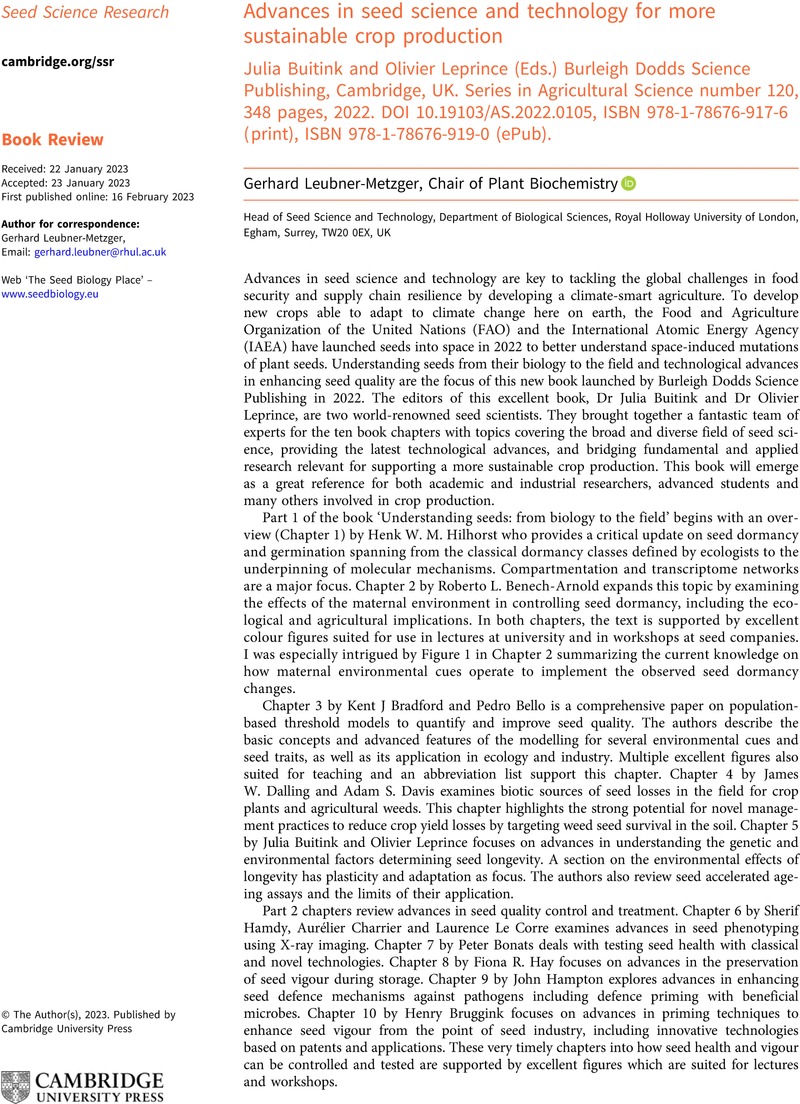No CrossRef data available.
Advances in seed science and technology for more sustainable crop production Julia Buitink and Olivier Leprince (Eds.) Burleigh Dodds Science Publishing, Cambridge, UK. Series in Agricultural Science number 120, 348 pages, 2022. DOI 10.19103/AS.2022.0105, ISBN 978-1-78676-917-6 (print), ISBN 978-1-78676-919-0 (ePub).
Review products
Advances in seed science and technology for more sustainable crop production Julia Buitink and Olivier Leprince (Eds.) Burleigh Dodds Science Publishing, Cambridge, UK. Series in Agricultural Science number 120, 348 pages, 2022. DOI 10.19103/AS.2022.0105, ISBN 978-1-78676-917-6 (print), ISBN 978-1-78676-919-0 (ePub).
Published online by Cambridge University Press: 16 February 2023
Abstract
An abstract is not available for this content so a preview has been provided. Please use the Get access link above for information on how to access this content.

- Type
- Book Review
- Information
- Copyright
- Copyright © The Author(s), 2023. Published by Cambridge University Press
Footnotes
Web ‘The Seed Biology Place’ – www.seedbiology.eu



